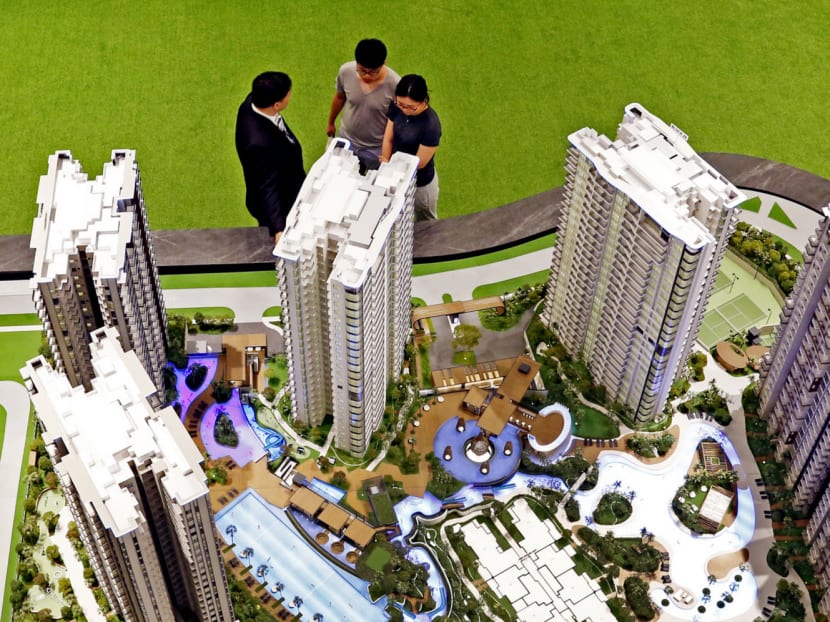What you need to know when buying a property for investment
The Monetary Authority of Singapore (MAS) released its latest financial stability review last month, noting that demand for housing remains strong. There has been an increase in the take-up of both new and resale private homes.

Private residential project launches have been driven by
the sales of one- and two-bedroom units. These units are more likely to have been bought as secondary homes. TODAY file photo
The Monetary Authority of Singapore (MAS) released its latest financial stability review last month, noting that demand for housing remains strong. There has been an increase in the take-up of both new and resale private homes.
According to data from the Urban Redevelopment Authority, in the first three quarters of this year, a total of 18,330 new and resale homes were sold, 14.6 per cent higher than in the corresponding period last year.
Many of these purchases seem to be driven by investment. While there are no official statistics on the number of people who own multiple properties in Singapore, recent new private residential project launches have been driven by the sales of one- and two-bedroom units. These units are unlikely to have been purchased due to household formation, the traditional source of housing demand. Rather, it is more likely that these private homes were bought as secondary homes.
In the past, most people were content with just one home, but it now appears that one property is no longer enough. This could be due to more people becoming increasingly investment savvy, and property has emerged as a popular choice for investors looking to diversify their assets.
While many are capitalising on the current low-interest-rate environment to own a home, this situation will not last forever. Interest rates will inevitably go higher, with the United States Federal Reserve on Wednesday (Thursday morning, Singapore time) raising the key fed funds rate target by 25 basis points to between 0.50 and 0.75 per cent in its first rate hike this year. The Fed also signalled that it will hike rates more quickly next year.
As such, property owners — especially those who are buying for investment —should bear in mind some key points before committing to a purchase. First, demand for rental homes comes predominantly from foreigners. Those who have bought small units in private residential projects would be looking to rent them to foreigners working alone in Singapore. It is likely that foreigners who are able to afford private residential rents would be here on Employment Passes.
Currently, the growth in this segment of the foreign workforce has been measured, with only 1,700 new passes issued in the first half of this year. The Ministry of Manpower has also raised the income criterion of Employment Pass applicants to S$3,600 from S$3,300 per month. Hence, buyers intending to let out their units need to be aware that new rental demand from foreign manpower may fall as the Singapore economy adjusts to become less reliant on them.
Next, owners need to know what expatriates are looking for in a rental home. As far as real estate purchases go, “location, location, location” has long been the guiding principle. Tenants are no different, looking for locations that fulfil their needs.
From our observation, most tenants prioritise transport connectivity and amenities. Most foreigners who rent small units are here alone for work. Thus, when looking for a place, they will tend to pick one that offers ease of transport. As such, property investors would do well to purchase a unit in a project that has at least one of the following locational attributes:
• In the city fringe, so that tenants have short commuting times to the city centre for work and leisure;
• Near a commercial cluster, as expatriates working in these areas will be looking to rent a place nearby; or
• Near public transport nodes, so as to minimise travelling times.
Having amenities within a short distance also enhances the attractiveness of a rental property. Shopping malls or eating establishments provide the convenience of dining out or buying food home. Having a supermarket nearby is a plus point, as tenants can buy household items easily.
While going by these general guidelines makes it easier to spot a good investment property, buyers must still be cautious. Buying a property involves a large sum of money at the point of purchase and more payments spread over years, and healthy finances are important.
However, as the MAS noted, most households are still resilient to economic shocks and their risk profiles have improved. Repayment risks remain only for a small group of borrowers. So, as long as buyers choose attractive properties to invest in, the risks should be minimised.
ABOUT THE AUTHORS: Eugene Lim is Key Executive Officer and Seah Yao Hui is Assistant Manager, Research at ERA Realty Network





